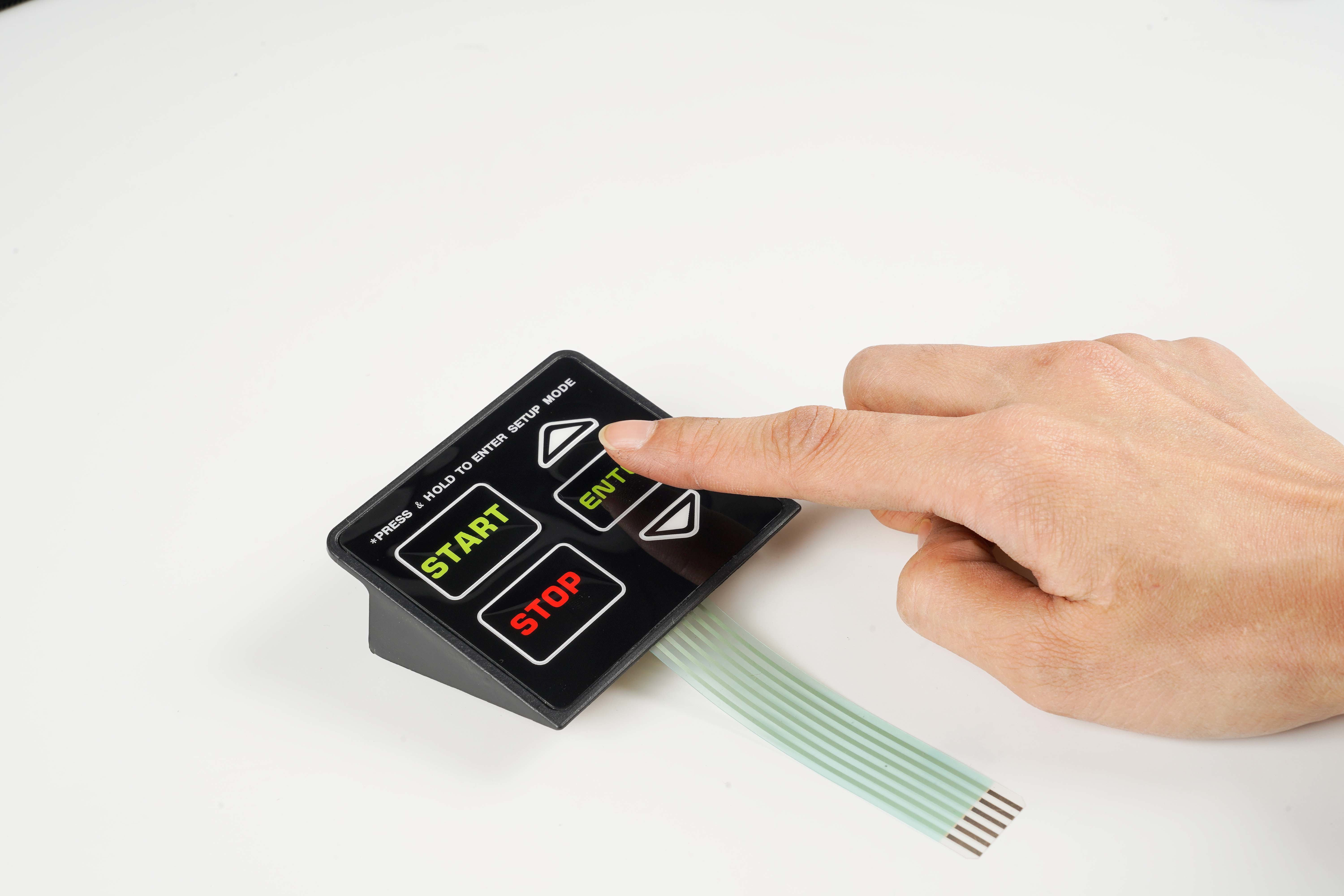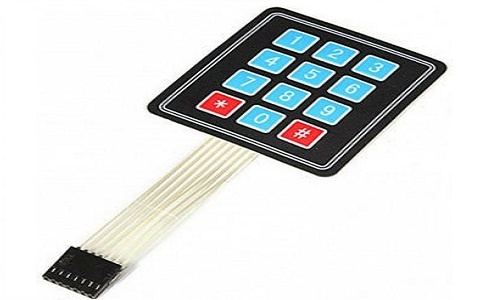The Production Process Behind Membrane Layer Change: What You Required to Know
The manufacturing procedure behind membrane changes combines careful layout, material option, and quality control. It starts with understanding the details of membrane switch design and proceeds through different phases, including product selections and printing techniques. Each stage plays a necessary role in making sure functionality and sturdiness. Nonetheless, the complexities of layer building and the rigorous screening criteria might disclose insights that are not instantly obvious. What exists beyond these foundational aspects?
Comprehending Membrane Layer Change Layout
Membrane layer buttons might appear basic at initial look, their layout entails detailed factors to consider that assure capability and resilience. The style process begins with an extensive understanding of individual demands, including the interface's intended application and environmental aspects. Functional designs is a crucial aspect, as the design should facilitate ease of usage while making sure that tactile responses fulfills individual expectations.Moreover, the layering of components, such as graphic overlays, glue layers, and conductive traces, have to be exactly crafted. membrane switch. This layered configuration not just affects the switch's responsiveness yet additionally impacts its durability. Focus is offered to the sealing strategies utilized to safeguard versus wetness and dirt, which might compromise efficiency. Furthermore, design considerations include appearances, where color systems and visual clarity improve user experience. Inevitably, the style of membrane layer changes balances functionality, customer experience, and sturdiness, ensuring that they fulfill the demands of numerous applications efficiently
Products Made Use Of in Membrane Switch Over Manufacturing
When picking materials for membrane layer button manufacturing, it is important to contemplate both efficiency and toughness. The main materials consist of polyester and polycarbonate films, which supply flexibility and stamina. These movies are typically covered with adhesive to ensure correct bonding to substrates. Conductive inks, commonly composed of silver or carbon, are critical for producing electric connections within the switch, permitting dependable operation.Additionally, a safety layer, such as a tough coat, is regularly applied to enhance scrape resistance and longevity. The choice of backing product, such as acrylic or foam, can substantially impact the switch's responsive feel and overall individual experience. Numerous environmental aspects, consisting of temperature level and moisture, need to guide material selection to guarantee peak efficiency in details applications. Inevitably, the right combination of materials adds to the membrane button's functionality and life-span, making notified options necessary for suppliers.
The Printing Refine: Creating Graphics and Text
The printing process in membrane switch manufacturing plays a considerable function in creating premium graphics and text. Different graphic design strategies are used to guarantee visual allure and capability, while cautious ink choice techniques are important for resilience and performance. Understanding these elements is basic for attaining finest cause membrane button style.
Graphic Style Techniques
Graphic design strategies play a vital role in the printing procedure of membrane buttons, as they define exactly how graphics and text will inevitably appear on the last product. Reliable graphic layout includes the critical usage of fonts, shades, and layouts to enhance readability and aesthetic allure. Developers commonly utilize vector graphics for scalability, making certain that images stay sharp at numerous sizes. Additionally, interest to comparison and alignment is crucial, as it affects user communication and visual quality. The consolidation of branding elements, such as logo designs, have to be handled with like maintain brand stability. Overall, thoughtful graphic style strategies add considerably to the performance and good looks of membrane switches, affecting individual experience and product efficiency.
Ink Option Methods
Choosing the proper ink is crucial for achieving the desired visual quality and sturdiness in membrane layer button manufacturing. Numerous ink kinds are made use of, consisting of solvent-based, water-based, and UV-curable inks. Each kind uses distinct characteristics, such as adhesion, versatility, and resistance to ecological variables. Solvent-based inks are usually preferred for their longevity and vivid shades, while water-based inks are more environmentally friendly yet might have restrictions in bond. UV-curable inks offer rapid curing and robust performance. In addition, shade matching methods guarantee that the selected inks straighten with layout specs. Ultimately, the option of ink should consider variables such as application approach, substrate compatibility, and end-use requirements to attain remarkable results in membrane layer button graphics and message.
Layer Building and Assembly

Product Option Refine
A mindful option of products is essential in the manufacturing process of membrane layer buttons, as it straight affects performance and longevity. The key products utilized consist of polyester, polycarbonate, and numerous conductive inks. Polyester is frequently favored for its outstanding resistance to chemicals and abrasion, making it appropriate for severe atmospheres. Polycarbonate, on the other hand, provides superior quality and influence resistance, which is helpful for applications needing presence and effectiveness. Conductive inks, typically made up of silver or carbon, are crucial for producing reputable electrical pathways. Furthermore, the option of adhesive products influences the general integrity of the button - membrane switch. Examining aspects such as environmental direct exposure, tactile responses, and visual requirements overviews makers in choosing the most effective products for their certain applications
Layer Adhesion Strategies
Sticking layers in membrane button building and construction is an important procedure that ensures functionality and long life. Different attachment methods are employed to secure excellent bonding between layers, which generally include using adhesives, warmth, and pressure. Pressure-sensitive adhesives (PSAs) are generally used for their convenience of application and prompt bonding capacities. Furthermore, thermal bonding strategies can be applied, where heat is used to trigger adhesive buildings, protecting a solid bond. The selection of attachment method mainly depends on the materials entailed and the particular application needs of the membrane button. Correct alignment and consistent application of adhesives are necessary to stop defects, protecting the button runs effectively throughout its intended life expectancy.
Top Quality Control Measures
Ensuring quality assurance throughout the layer construction and assembly of membrane buttons is crucial for preserving efficiency and integrity. This procedure generally includes a number of essential measures, including extensive examinations at each stage of manufacturing. Suppliers use sophisticated testing techniques, such as peel examinations and bond assessments, to validate the honesty of layer bonds. In addition, aesthetic inspections are conducted to identify any defects in printing or material inconsistencies. Environmental conditions, such as temperature level and moisture, are meticulously checked to assure excellent healing and attachment. Regular calibration of tools aids preserve precise Learn More Here production requirements. By carrying out these high quality control steps, manufacturers can greatly lower the danger of product failure, ensuring that the final membrane layer changes satisfy learn the facts here now the required requirements and client expectations.
Examining and Quality Assurance Steps

Developments in Membrane Layer Change Technology
As innovations in technology continue to progress, membrane buttons are gaining from cutting-edge advancements that enhance their performance and user experience. One remarkable development is the assimilation of capacitive touch innovation, which enables for more user-friendly and responsive individual interfaces. This change not only boosts looks but likewise reduces mechanical damage, prolonging the life-span of the switches.Additionally, developments in visuals overlay materials have brought about improved toughness and resistance to environmental elements such as dampness and UV light. These products now supply enhanced clearness and illumination, further raising the aesthetic appeal.Furthermore, the unification of smart innovation is changing membrane layer switches into interactive control board, enabling connectivity with IoT gadgets. This connection fosters a seamless individual experience, leading the way for applications in numerous industries, from healthcare to consumer electronics. Jointly, these developments setting membrane layer changes as essential components in modern device design.
Often Asked Concerns
For how long Does the Membrane Change Production Process Take?
The duration of the membrane switch manufacturing procedure can differ considerably. Factors such as complexity, products made use of, and manufacturing quantity impact timelines, with regular manufacturing varying from a few days to a number of weeks for completion.
What Are the Common Applications for Membrane Switches?
Membrane layer switches are typically used in different industries, including automotive controls, household devices, clinical gadgets, and consumer electronics (membrane switch). Their versatility and durability make them suitable for applications calling for easy to use interfaces and dependable performance in varied atmospheres
Can Membrane Switches Be Custom-made for Certain Requirements?

What Is the Lifespan of a Common Membrane Layer Switch?
The lifespan of a typical membrane switch varies, but typically, it ranges from 1 to 5 million cycles. Elements such as usage, environment, and material quality significantly influence visit this website sturdiness and general performance with time.

Are Membrane Layer Changes Ecologically Friendly?
The ecological kindness of membrane switches differs. Some products utilized may not be recyclable, while others can be eco-friendly. The total impact depends on producing practices and products, demanding cautious consideration throughout choice and disposal. The manufacturing procedure behind membrane switches combines mindful design, product choice, and quality control. It starts with understanding the details of membrane layer switch layout and progresses via different phases, including product options and printing techniques. When selecting products for membrane button manufacturing, it is crucial to consider both efficiency and toughness. A careful choice of materials is necessary in the manufacturing procedure of membrane layer switches, as it directly affects functionality and toughness. The choice of bond approach mostly depends on the products involved and the certain application requirements of the membrane button.